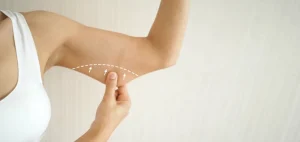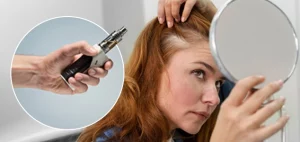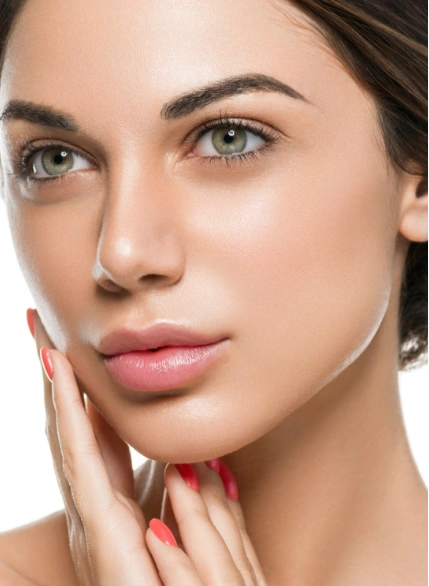Table of Contents
Here is the article where you will learn what is Dermaplaning and its benefits. There are many people who have doubts so you will also learn about does Dermaplaning make hair grow back thicker.
Dermaplaning removes the top layers of your skin in a less invasive manner. It can aid in lessening the visibility of skin pits or acne scars. Some people get undesirable hair removed via dermaplaning.
What is Dermaplaning?
A minimally invasive cosmetic procedure for your skin is dermaplaning. Your medical professional removes the topmost layers of your skin using a specialized tool.
By exposing fresher, intact skin, dermaplaning can help to lessen the appearance of acne scars or other skin blemishes. While it might make your skin appear younger, it cannot reverse aging. For hair removal, some people also have dermaplaning. Your hair will grow back, so this is only a temporary solution.
The operation is typically performed on the face, but it can be done anywhere on the body.
When Do You Need Dermaplaning?
Dermaplaning can be an option for you if you have issues with your skin like:
- Scars from acne.
- Acrylic keratosis (scaly skin patches that can lead to skin cancer).
- Dry or dull skin.
- Peach fuzziness (light, soft hair on your face).
- Skin harmed by exposure to the sun.
- Small lines (wrinkles).
Is Dermaplaning Safe – Benefits of Dermaplaning
Yes! The only things you should avoid with this non-invasive, painless procedure are using too much pressure or repeatedly going over the same skin area. Keep your skin lovely and taut by utilizing feather-like strokes with one hand while using the other to hold the device. And if you manage to irritate your skin, give it the night to heal and breathe without any moisturizers. You will always be fully in control, and no chemicals will be used.
Here are two major Dermaplaning benefits:
It can remove peach fuzz.
The primary motivation for doing it is to get rid of the vellus hairs on their faces, also known as peach fuzz by others. Everybody has these little vellus hairs covering their bodies, and they have a purpose: Vellus hairs protect the skin and keep us warm. However, because some individuals’ vellus hairs are denser and darker than others and hence more noticeable, some people may decide to have them removed.
It can also help exfoliate your skin.
The removal of vellus hairs is the primary motivation, although the blade also removes the stratum corneum, a thin layer of dead skin. Your skin will appear more radiant, your skin care products absorb better, and your foundation will apply more smoothly. To jump-start and exfoliate the top layer of dead skin cells before additional treatments like microdermabrasion or lasers like Fraxel, dermaplaning is frequently performed as an add-on.
How does Dermaplaning work?
As dermaplaning only affects the skin’s surface, it is one of the least intrusive cosmetic procedures available. An extremely sharp scalpel is used to delicately scrape the skin’s surface throughout the procedure. Instead of cutting the skin, the scalpel scrapes away dead skin cells, debris, and vellus hair (also known as “peach fuzz”) from the skin’s surface.
Dermaplaning can be done alone to aid with skin texture and tone issues. This procedure may be helpful for people with face problems like fine lines and wrinkles, acne scars, or dull, dry skin. Dermaplaning also has the potential to improve the efficiency of other treatments. This is because it eliminates surface-level barriers on the skin. For instance, dermaplaning may be performed before a chemical peel to improve the efficiency of the peel by allowing the acids to permeate the skin more thoroughly.
How Long Does Dermaplaning Last?
Dermaplaning produces transitory results that disappear after 3–4 weeks. This period roughly corresponds to the length of the skin’s regeneration cycle. It is crucial to remember that this is not a long-term fix. After all, fine hairs are continually expanding, and dead skin cells accumulate over time.
Read in detail: How Long Does Dermaplaning Last?
Does Dermaplaning Make Hair Grow Back Thicker?
Let’s start by just saying “NO” to clear the air does derma planing make hair grow back thicker? It’s a fallacy that following dermaplaning, facial hair will get darker or thicker. Your hair cannot perform this task because dermaplaning is a non-invasive exfoliation procedure. Although the hair will regrow, neither its color nor thickness will alter. Moreover, when new skin cells proliferate, existing skin cells eventually die. But all of this can be resolved in minutes with a brief and consistent treatment.
Only hormonal changes or imbalances can cause a person’s hair to change color or thickness. For instance, menopause has caused some women’s hair to become thicker. Your facial hair should grow back precisely how it did before, whether you shave or use dermaplaning equipment.
Conclusion
Dermaplaning is a rapid, safe procedure that combines exfoliation and face hair removal into one treatment.Plan a Dermaplaning treatment at Syra Aesthetics once a month to keep smooth and radiant skin. Our committed skin specialists have a wealth of knowledge in assisting patients in achieving smooth, glowing skin.

About The Author
Dr. Syra Hanif M.D.
Board Certified Primary Care Physician
Dr. Hanif is the Director of Aesthetic Medicine. She is a board-certified physician in Aesthetic Medicine who specializes in using non-surgical alternatives in order to enhance one's appearance through Botox and fillers.
Read More












